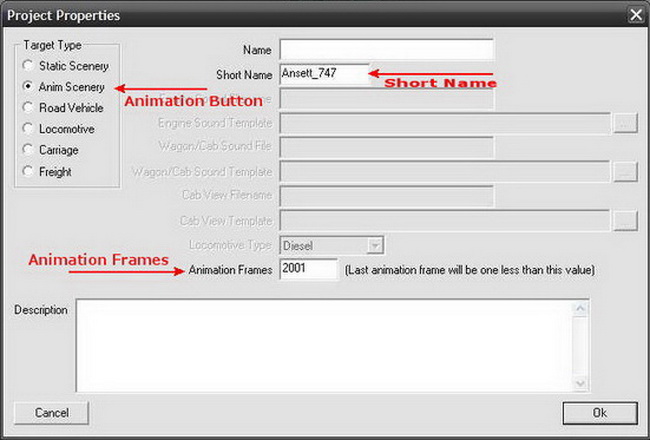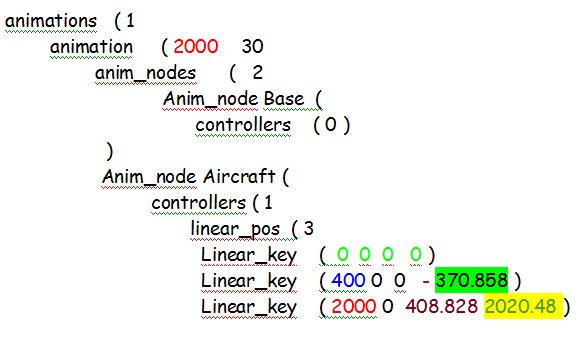I have given you a rough idea of how to animate an aircraft so that it can be seen flying in the MSTS whilst you are driving a train. All these numbers are approximate as the 2000 frames can be 1000 or even 500: it's how far or fast you want your aircraft to fly. I have given you the near specifications for a Boeing 747; smaller aircraft would have less frames, lower height and lower speed.
I have seen an acrobatic Cessna in MSTS that would make a FA-18 red with shame for speed.
Final adjustments must be performed in the Route Editor. Right-click the RE workspace whilst the aircraft is in Wire frame mode (W key on the Keyboard and in the Properties General(cont), tick the "Animate this Object"; then you can adjust animations' values. It's then a process of exiting the Route Editor, adjusting and then saving the "S" file, and then drop back into the RE to note your aircraft's animation.
I will admit you might think it's all a bit hit and miss as the aircraft can only do as you direct it to do, but once you have studied the Animations in the "S" file against this tutorial you should have a reasonable flying aircraft of your own.
One "feature" in MSTS that I must warn you about is that all animations start at the same time, so that if you have a number of aircraft leaving a runway, they will all leave at the same time when MSTS is reloaded. You can vary this by making one animation slower than the other so that it gets left behind but it will eventually catch up.
Don't forget that the maximum distance seen in MSTS is 2000 meters.
You can download any of my animated aircraft from www.uktrainsim.com or my download page at ukts and use their animations if you wish.
Finally, building and flying your aircraft is your responsibility and no blame will be accepted by the author if it flies off into the blue yonder!






